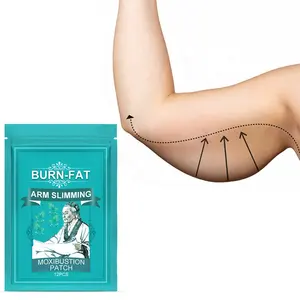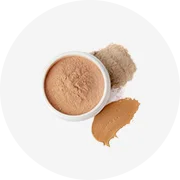Phổ biến trong ngành của bạn






Mũi Khoan Hình Nón-Mũi Khoan Nhà Sản Xuất Sơn Thiếc/Đáy An Toàn Dụng Cụ Làm Móng Để Phay Mũi Khoan Cacbua Vonfram
4,00 US$ - 4,75 US$
Đơn hàng tối thiểu: 1 Cái







SHUANGJIA Mũi Khoan Móng Tay Cacbua Vonfram 5 Trong 1 Cắt Chéo An Toàn 6.8MM
Sẵn sàng vận chuyển
4,08 US$ - 4,40 US$
Đơn hàng tối thiểu: 5 Cái
Vận chuyển mỗi chiếc: 0,94 US$







Shuangjia Tất Cả Các Kích Thước Hình Dạng Thùng Chất Lượng Cao Làm Móng Tay Máy Vừa Kim Cương Nga Móng Tay Khoan Bits Để Đặt Móng Tay Khoan
Sẵn sàng vận chuyển
0,43 US$ - 0,55 US$
Đơn hàng tối thiểu: 20 Cái
Vận chuyển mỗi chiếc: 1,42 US$







Aproms Mũi khoan móng cacbua 6.6mm mũi khoan tròn Thùng trơn hàng đầu siêu cắt 4xc 5xc dao phay móng tay phụ kiện máy khoan móng điện
2,50 US$ - 3,50 US$
Đơn hàng tối thiểu: 30 Cái







Nhà Máy Chuyên Nghiệp Giá Bán Buôn Tungsten Carbide Làm Móng Tay Móng Tay Tập Tin 5 Trong 1 Lớn Móng Tay Dài Khoan Bits Set
4,50 US$ - 5,75 US$
Đơn hàng tối thiểu: 20 Cái


OEM tùy biến phẫu thuật khoan Kit nha sĩ công cụ khoan cấy ghép nha khoa hướng dẫn khoan bit
2,99 US$ - 10,99 US$
Đơn hàng tối thiểu: 10 Cái






154 Pcs Nha Khoa Kim Cương BUR Danh Mục Nha Khoa Khoan Bits Cho Móng Tay Mẫu Cuốn Sách Fg Shank Tốc Độ Cao Mũi Khoan Nha Sĩ Phòng Thí Nghiệm Phụ Kiện
30,00 US$ - 39,00 US$
Đơn hàng tối thiểu: 1 Cái






Phòng Thí Nghiệm Nha Khoa Vòng Gắn Điểm Kim Cương Cho Micro Motors
0,60 US$ - 0,80 US$
Đơn hàng tối thiểu: 50 Cái






Chuyên Nghiệp E Tập Tin Thùng Gốm Nail Khoan Bits Đối Nail Beauty
1,50 US$ - 2,00 US$
Đơn hàng tối thiểu: 50 Cái






Mũi Khoan Kim Cương Nha Khoa Mũi Khoan Kim Cương Đầu Đánh Bóng Răng FG Tốc Độ Cao
0,30 US$ - 0,40 US$
Đơn hàng tối thiểu: 100 Cái





Vật Liệu Cho Máy Khoan Nha Khoa P G Mũi Khoan Tập Tin Kênh Gốc Mũi Khoan Mở Rộng Để Mở Rộng Mũi Khoan Trụ Sợi Kim
4,89 US$ - 4,99 US$
Đơn hàng tối thiểu: 10 Hộp

HSS-E 64 Mét MT5 morse taper Shank Twist Khoan Bits Đối với thép không gỉ
263,04 US$
Đơn hàng tối thiểu: 50 Cái
Các danh mục hàng đầu
Giới thiệu về mũi khoan nha sĩ
Ngày nay, mũi khoan nha sĩ không còn là điều mới mẻ đối với những người bình thường và không còn bị coi là điều cấm kỵ khi sử dụng. Nếu bạn đang tìm kiếm niềm vui áp chót đó, bạn phải kiểm tra sự bao la. Bộ sưu tập mũi khoan nha sĩ tại Alibaba.com. Những gợi cảm và cong. mũi khoan nha sĩ đáng giá từng xu và chắc chắn làm cho đêm đó trở nên đặc biệt đối với bạn. Những con búp bê này có ngoại hình giống như thật, bắt đầu từ tóc đến ngón chân theo mọi nghĩa.
Cho dù bạn là một người cô đơn đang tìm kiếm một người bạn đời như cuộc sống hay một cặp vợ chồng muốn thêm gia vị cho cuộc sống của họ, bạn đều có thể sử dụng chúng . mũi khoan nha sĩ để đốt cháy ngọn lửa đó. Những ngoạn mục. mũi khoan nha sĩ có thể tùy chỉnh theo mong đợi của bạn. Những điều tuyệt vời. mũi khoan nha sĩ có sẵn ở cả phiên bản dành cho nam và nữ và được làm từ silicone cấp y tế để sử dụng an toàn. Hãy sở hữu ngay bây giờ và tận hưởng một đêm đam mê và cháy bỏng.
Alibaba.com cung cấp những điều tuyệt vời này. mũi khoan nha sĩ ở mọi hình dạng cơ thể, kích thước và sắc tộc. Dù yêu cầu của bạn đối với. mũi khoan nha sĩ, bạn có thể tải tất cả chúng trên trang web. Những cái này. mũi khoan nha sĩ được tạo hình bởi những người thợ thủ công giỏi nhất và mọi chi tiết phức tạp đều được kiểm tra kỹ lưỡng. Những con búp bê này có mắt, tóc, móng tay và tất cả các bộ phận cơ thể khác tương tự như người thật.
Alibaba.com cung cấp nhiều loại. mũi khoan nha sĩ có thể giúp bạn mua các sản phẩm phù hợp với ngân sách và các yêu cầu khác của bạn. Các sản phẩm này an toàn để sử dụng, được chứng nhận và thân thiện với môi trường trong tự nhiên. Đơn đặt hàng OEM có sẵn trên các sản phẩm này.
Cho dù bạn là một người cô đơn đang tìm kiếm một người bạn đời như cuộc sống hay một cặp vợ chồng muốn thêm gia vị cho cuộc sống của họ, bạn đều có thể sử dụng chúng . mũi khoan nha sĩ để đốt cháy ngọn lửa đó. Những ngoạn mục. mũi khoan nha sĩ có thể tùy chỉnh theo mong đợi của bạn. Những điều tuyệt vời. mũi khoan nha sĩ có sẵn ở cả phiên bản dành cho nam và nữ và được làm từ silicone cấp y tế để sử dụng an toàn. Hãy sở hữu ngay bây giờ và tận hưởng một đêm đam mê và cháy bỏng.
Alibaba.com cung cấp những điều tuyệt vời này. mũi khoan nha sĩ ở mọi hình dạng cơ thể, kích thước và sắc tộc. Dù yêu cầu của bạn đối với. mũi khoan nha sĩ, bạn có thể tải tất cả chúng trên trang web. Những cái này. mũi khoan nha sĩ được tạo hình bởi những người thợ thủ công giỏi nhất và mọi chi tiết phức tạp đều được kiểm tra kỹ lưỡng. Những con búp bê này có mắt, tóc, móng tay và tất cả các bộ phận cơ thể khác tương tự như người thật.
Alibaba.com cung cấp nhiều loại. mũi khoan nha sĩ có thể giúp bạn mua các sản phẩm phù hợp với ngân sách và các yêu cầu khác của bạn. Các sản phẩm này an toàn để sử dụng, được chứng nhận và thân thiện với môi trường trong tự nhiên. Đơn đặt hàng OEM có sẵn trên các sản phẩm này.











